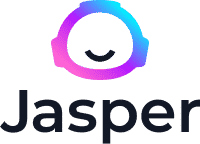I started my first blog more than 15 years ago. That was one of the best decisions of my life. Not only did it provide my family with an extra source of income, but it gave me a voice that I might not have had otherwise.
You’re probably reading this article because you’re thinking about starting a blog. Maybe it’s a personal blog about a hobby you love. Or maybe you’re wanting to add a blog for your business to drive new customers. No matter what the reason might be, there’s a lot you need to consider when getting started.
I’ve made mistakes over the years…lots of them. But each time, I’ve learned a valuable lesson and grown.
I’ve put together this list of helpful blogging tips for beginners because I want to provide you with an advantage. I want to give you information that I didn’t have when I was just starting out. I want to see each of you succeed.
10 Helpful Blogging Tips For Beginners
1. Start With WordPress
There are a lot of content management systems (CMS) available. Some of the more popular choices are Wix, SquareSpace, Joomla, and Drupal. While each of these has some great perks, none stack up to WordPress.
If you’re just starting your blog, then I highly recommend doing it on WordPress. It’s easily the most popular CMS in the world – for both personal and sites like TechCrunch, New York Post, and Mashable.
WordPress helps to give you control over every part of your site. Things like the design, the way it operates, and having the ability to integrate with thousands of apps and plugins.
Some of the biggest benefits of WordPress include…
- It’s SEO friendly
- It has thousands of themes that are fully customizable
- It has a mobile responsive design
- It’s free
The biggest downside to WordPress compared to an option like Wix is that you have to set up your own hosting. Luckily you can get hosting from Bluehost for less than $3 per month.

2. Produce Great Content That People Are Searching For
There was once a time when you could publish a mediocre article and get traffic from Google. Times have changed. Google’s search algorithm is much smarter than it used to be. They want to see that you’re providing quality content that adds value compared to others.
But writing great content isn’t all. You need to write great content that people are actually searching for. 51% of all web traffic comes from organic search. That means your content needs to be about something people actually want to read.
Now you’re probably wondering how you find out what people are searching for. There are a bunch of paid keyword research tools available, but there are also free tools you can use. Google Keyword Planner is one of my favorites. It’s not packed with features but it will give you monthly search volume and additional keyword ideas.
If you have the money to spend on a paid tool, I recommend KWFinder. It has a bunch of useful SEO features and is much cheaper than other options available.
3. Make Your Articles Easy To Read
I hate to break it to you but as humans, we’re always looking for shortcuts. I don’t know anyone that actually reads an article from start to finish. We just want to grab the useful information and move on.
That being said, you need to make sure your content is easily digestible by your readers. To do this, make sure you follow these tips.
- Use Headers – By using descriptive headers, you break up the content and provide your reader with a sneak peek about what they’ll find within each section.
- Short Paragraphs – Long paragraphs can be difficult to read. That means most people won’t bother. Making your paragraphs short and to the point will allow your readers to skim, while still finding all the valuable information you’re providing them.
- Short Sentences – Similar to paragraphs, nobody wants to read the never-ending sentence. By breaking up long sentences with transition words, you’ll keep your reader more interested.
- Use Images and Videos – You’ve probably heard the phrase, a picture tells a thousand words. While in this instance it might not tell exactly 1,000 words, they’re going to go a long way at helping to tell your story. Images and videos will also help break up your article.
4. Write Catchy Headlines
The first thing your reader is going to see is the headline of your article. That means it needs to be catchy. You want to make a person want to read the article you’re writing.
Your headline is easily the most important part of each article you write. If you grab someone’s attention, they’re going to want to learn more.
5. Write Great Introductions
Once you’ve grabbed someone’s attention with your headline, you need to keep them interested within your introduction.
Your introduction has two main purposes. It should explain what the article is about and it should be catchy so your reader wants to read more.
If your introduction reads like a college term paper, you’ll probably turn away a lot of people. However, if it grabs their attention and makes them crave the rest of what you have to offer, they’ll stick around.
6. Build An Email List
Google updates its search algorithm frequently. Because of this, the next update could completely change the number of visitors you receive.
Meta and Instagram could decide they no longer want to show your content to your followers.
However, your email subscribers are never going anywhere (as long as you don’t make them mad). They subscribed because they don’t want to miss any of the information you’re sharing. They trust you.
Building an email list is one of the most important things you can do for your blog.
The best part is that building an email list isn’t difficult. Third-party tools like Constant Contact or ConvertKit give you all the tools you need.
Just remember that if you’re asking someone to give you their information, you need to return the favor. Some bloggers keep it as simple as offering to keep the reader in the loop each time a new article is published. However, others will offer something for free. This is called a lead magnet.
Let’s say you’re starting a home improvement blog. You could put together a step-by-step video on building a deck, and offer it exclusively to anyone who signs up for your email list.
If you’re starting a personal finance blog, you could put together a five-day email Bootcamp that helps people eliminate debt.
Lead magnets offer something in exchange for their email.
7. Invest In Your Blog
I remember the very first time I earned an affiliate commission. It was an amazing feeling. When this happens to you you might be tempted to spend it. You might even be tempted to invest it in the stock market. However, instead of doing either of those, invest it back into your business.
Depending on the commissions you earn that month, you could use it to cover the cost of a keyword research tool. Or, you could hire a social media assistant to create graphics. You could even hire a writer to help you produce more content.
By putting your revenue back into the business, you’ll allow yourself to grow faster.
Now does this mean you’re never supposed to pay yourself for all your hard work? Of course not.
Come up with a number. Maybe it’s $2,000, maybe it’s $5,000, or maybe it’s more than that. Each month, put your revenue back into your business. Then when you exceed the number you established for yourself, you can start paying yourself a portion of the revenue over that number.
8. Learn and Impliment Basic On-Page SEO
Earlier I mentioned that more than 50% of all blog traffic comes from organic search (Google). That means search engines need to be able to find you.
On-page SEO is one of the easiest and best ways to start optimizing your blog. Here are a few basic SEO tips for on-page optimization.
- Short and description URLs – After you’ve written your blog post, you’ll need to come up with the slug for the article. This should be short, but also descriptive about what the article is about. It should also contain the articles main keyword. As an example look at the slug for this article. It’s blogging-tips-for-beginners. It’s short, but tells what the article is about.
- Include your keyword in the title, meta description, and H1 tags – Your title, meta description, and H1 tags all help the reader and Google understand what the article is about. That being said, use your primary keyword within each of these.
- Image Optimization – Using images is a great way to break up content and give an article added appeal. Unfortunately, images can also have detrimental effects to your blogs SEO. If an image is too large, it can dramatically slow down how fast your site loads, which is bad for SEO.
9. Network With Other Bloggers
Over the years I’ve found that the blogging community has always been a very welcoming group of people. When I was first starting out I was working at an investment research company. One of my colleagues was big into building websites and flipping them for a profit. I used to ask him questions all the time and he would give me his two cents. That advice helped me tremendously.
Networking with other bloggers is a great way to grow.
Don’t be afraid to reach out to other bloggers in your vertical or even bloggers in other verticals. These relationships could become very valuable to you down the road.
Not sure where to start? Look into Facebook groups for new bloggers. You can also search Instagram by hashtags. Maybe try something like #newblogger.
Once you find your group, start building relationships. Eventually, you can partner with these bloggers on guest articles, building courses, or hosting live events. All of these things can help grow your reach and hopefully your revenue.
10. Write Guest Posts For Different Blogs
You might be thinking, why would I write for another blog when I have my own. The simple answer is for exposure.
Great blogs are built on great content. If you’re offering another blogger an amazing piece of content then it’s less work they need to do. Plus, you’ll get a valuable link back to your blog. This is great for SEO and great for bringing in new readers.
Not sure where to start? Start with the bloggers you’re networking with. If you’ve established a relationship with them, most will be more than happy to have free content.
You can also find blogs that welcome guest posts through Google. For example, let’s assume you have a personal finance blog. Try Googling the following things:
- personal finance “write for us”
- personal finance “guest post”
- personal finance “guest article”
Do you have any helpful blogging tips for beginners that you want to share? Go ahead and leave them in the comments below.






